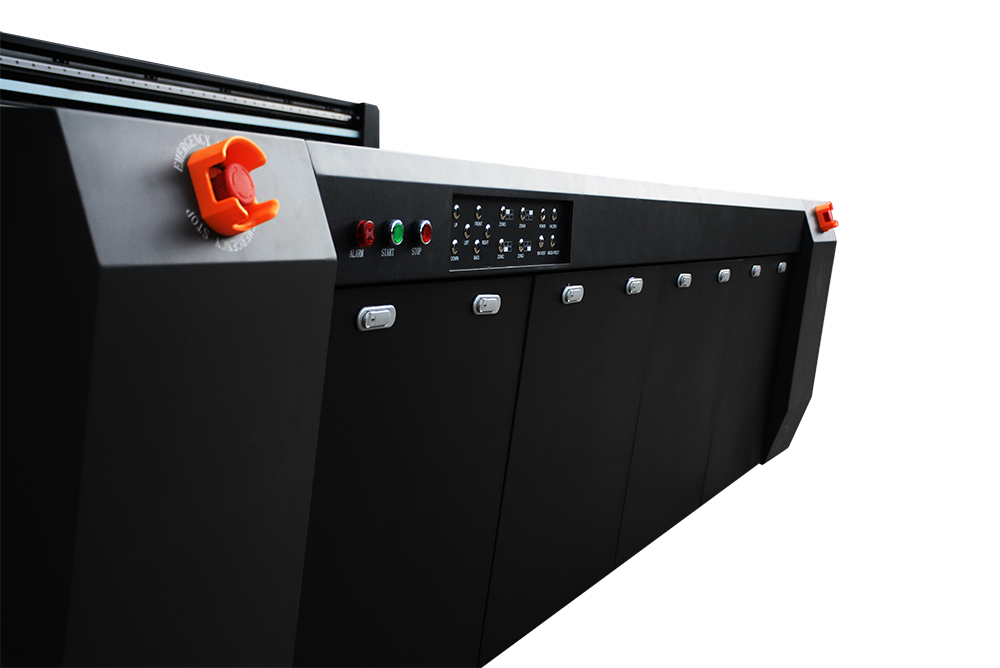What Is the Difference Between Traditional and UV Flatbed Printers?
What Is the Difference Between Traditional and UV Flatbed Printers?
In the realm of digital printing, technology continues to evolve, offering businesses and individuals a wide array of options to choose from when it comes to printing equipment. Two popular choices in this domain are traditional printers and UV flatbed printers. While both are capable of producing high-quality prints, they differ significantly in terms of their working principles, applications, and the end results they deliver. This article delves into the key distinctions between traditional and UV flatbed printers, exploring their respective technologies, advantages, and limitations.

Traditional Printers: An Overview
Traditional printers, often referred to as offset printers, have been the backbone of the printing industry for decades. They rely on a mechanical process where an image is transferred from a plate to a rubber blanket, then rolled onto the printing surface. This technique, known as offset printing, allows for precise ink distribution and consistent color reproduction, making it ideal for large-scale printing projects that require high volumes and tight color accuracy.
One of the defining characteristics of traditional printers is their use of CMYK (Cyan, Magenta, Yellow, and Key/Black) ink system, which allows for a broad color gamut when combined. These printers typically use water-based or oil-based inks, depending on the specific application and desired finish. Water-based inks are eco-friendly and quick to dry, while oil-based inks offer better durability and resistance to fading.
UV Flatbed Printers: A Modern Alternative
UV flatbed printers, on the other hand, represent a more recent technological advancement in the printing industry. These printers utilize UV-curable inks that are instantly dried and cured by exposure to ultraviolet light. This process enables printing on a wide range of materials, including plastics, glass, metal, wood, and even textiles, without the need for pre-treatment or post-drying.
The flatbed design of these printers allows for direct printing onto the surface of the material, eliminating the need for printing plates or intermediaries. This not only simplifies the printing process but also enables precise control over the print area, making UV flatbed printers highly versatile and suitable for custom and short-run printing jobs.
Key Differences
Ink Technology and Curing Process:
Traditional printers use CMYK inks that are either water-based or oil-based and require time to dry.
UV flatbed printers use UV-curable inks that are instantly dried and cured by UV light, enabling immediate handling and finishing.
Material Compatibility:
Traditional printers are primarily designed for paper and cardboard-based materials.
UV flatbed printers can print on a diverse range of materials, including rigid and flexible surfaces.
Print Quality and Resolution:
Both types of printers can achieve high-resolution prints, but UV flatbed printers often excel in producing sharp details and vibrant colors due to the instant curing process.
Traditional printers might require additional processes for achieving certain special effects or finishes.
Production Speed and Volume:
Traditional printers are optimized for high-volume production, making them cost-effective for large print runs.
UV flatbed printers are more suited for short-run and on-demand printing, offering quick setup and changeover times.
Environmental Impact:
Traditional printers, especially those using water-based inks, are generally considered more environmentally friendly due to lower VOC emissions.
UV flatbed printers use UV-curable inks, which may contain volatile organic compounds (VOCs), but the lack of solvent evaporation and minimal waste generation during the printing process contribute to their environmental appeal.
Cost and Investment:
Traditional printers often have a lower initial investment cost, making them more accessible for startups or businesses with budget constraints.
UV flatbed printers, due to their advanced technology and versatility, tend to have a higher upfront cost but can offer long-term savings through reduced material preparation and finishing costs.
Advantages and Limitations
Traditional Printers:
Advantages: Cost-effective for large-scale production, wide color gamut, eco-friendly options available.
Limitations: Limited material compatibility, longer drying times, less suitable for short-run or customized printing.
UV Flatbed Printers:
Advantages: Versatile material compatibility, quick drying and curing, high-quality prints, suitable for short-run and customized printing.
Limitations: Higher initial investment, potential environmental concerns with ink chemistry, limited to flat or slightly curved surfaces.
Conclusion
In summary, the choice between traditional and UV flatbed printers ultimately depends on the specific needs and goals of the printing project. Traditional printers excel in cost-effective, high-volume production, particularly for paper-based materials, while UV flatbed printers offer unparalleled versatility and quality for a wide range of materials and applications, especially in short-run and customized printing scenarios.
As technology continues to advance, both traditional and UV flatbed printers are likely to incorporate new features and capabilities, further blurring the lines between these two categories. Ultimately, understanding the unique strengths and limitations of each technology will enable businesses and individuals to make informed decisions that align with their printing requirements and long-term objectives.
